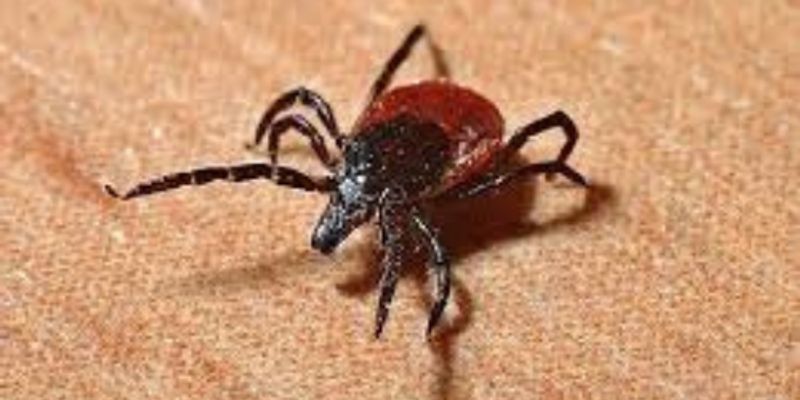Tick
Ticks are part of the arachnid family, which also includes mites, spiders, and scorpions. A tick attaches itself to the skin of a person or animal and sucks blood. The two types of ticks that many people talk about are the deer tick and the dog tick.
-
MAY 14, 2025 | 10:00 AMC.E. CREDITSThe global incidence of tick-borne diseases has increased substantially over the last few decades. This is largely due to environmental climate change, the expansion of new tick populations,...Borrelia burgdorferi, the causative agent of Lyme disease, cycles between an Ixodes spp. vector and a vertebrate reservoir host, typically small rodents. Humans become infected when they int...
APR 09, 2021 | 9:00 AM
Date: April 9, 2021 Time: 9:00am PDT There are tick-borne diseases beyond what causes Lyme disease. Different geographies have differing prevalence’s of tick-borne infections. In the n...
APR 24, 2019 | 9:30 AM
DATE: April 24, 2019TIME: 9:30am PDTTicks are currently considered to be second only to mosquitoes as vectors of human infectious diseases in the world. Each tick species has preferred...
OCT 23, 2018 | 9:00 AM
DATE: October 23, 2018TIME: 9:00AM PDTIxodes scapularis is the principal vector of the Lyme disease spirochete, Borrelia burgdorferi. I. scapularis genome was the first and only...
Lyme disease is a common tick-transmitted infection caused by spirochetes in the Borrelia burgdorferi sensu lato complex. Borrelia burgdorferi is the primary cause of Lyme disease in the Unit...
The Infectious Diseases Pathology Branch of the Centers for Disease Control and Prevention (CDC) routinely receives autopsy and biopsy tissues for diagnostic evaluation. These tissues are typ...
Next Generation Sequencing has revolutionized genomic variant discovery. The major bottle-neck for sequencing projects is the individual, biological sample, library preparation. This platfo...
Speaker:
Joanna Hamilton, PhD, Lynne Apone, PhD, Zach Smith, MS
Presented at: Genetics and Genomics Virtual Event Series 2014
Vaginitis and vaginosis, including Bacterial Vaginosis (BV), Vulvovaginal Candidiasis (VVC), and Trichomoniasis (TV), are extremely common conditions, consuming many healthcare resources and...
Speaker:
Cynthia Foss Bowman, MD and Guiqing Wang, MD, PhD
MAY 14, 2025 | 10:00 AM
C.E. CREDITS
The global incidence of tick-borne diseases has increased substantially over the last few decades. This is largely due to environmental climate change, the expansion of new tick populations,...
Borrelia burgdorferi, the causative agent of Lyme disease, cycles between an Ixodes spp. vector and a vertebrate reservoir host, typically small rodents. Humans become infected when they int...
APR 09, 2021 | 9:00 AM
Date: April 9, 2021 Time: 9:00am PDT There are tick-borne diseases beyond what causes Lyme disease. Different geographies have differing prevalence’s of tick-borne infections. In the n...
APR 24, 2019 | 9:30 AM
DATE: April 24, 2019TIME: 9:30am PDTTicks are currently considered to be second only to mosquitoes as vectors of human infectious diseases in the world. Each tick species has preferred...
OCT 23, 2018 | 9:00 AM
DATE: October 23, 2018TIME: 9:00AM PDTIxodes scapularis is the principal vector of the Lyme disease spirochete, Borrelia burgdorferi. I. scapularis genome was the first and only...
Lyme disease is a common tick-transmitted infection caused by spirochetes in the Borrelia burgdorferi sensu lato complex. Borrelia burgdorferi is the primary cause of Lyme disease in the Unit...
The Infectious Diseases Pathology Branch of the Centers for Disease Control and Prevention (CDC) routinely receives autopsy and biopsy tissues for diagnostic evaluation. These tissues are typ...
Next Generation Sequencing has revolutionized genomic variant discovery. The major bottle-neck for sequencing projects is the individual, biological sample, library preparation. This platfo...
Speaker:
Joanna Hamilton, PhD, Lynne Apone, PhD, Zach Smith, MS
Presented at: Genetics and Genomics Virtual Event Series 2014
Vaginitis and vaginosis, including Bacterial Vaginosis (BV), Vulvovaginal Candidiasis (VVC), and Trichomoniasis (TV), are extremely common conditions, consuming many healthcare resources and...
Speaker:
Cynthia Foss Bowman, MD and Guiqing Wang, MD, PhD









